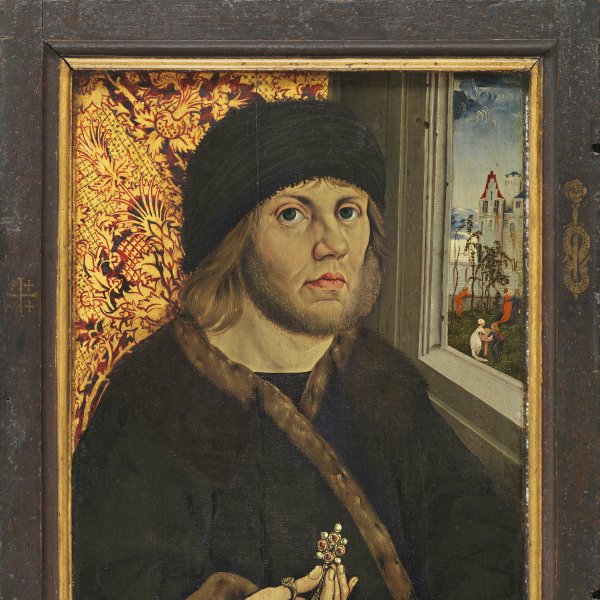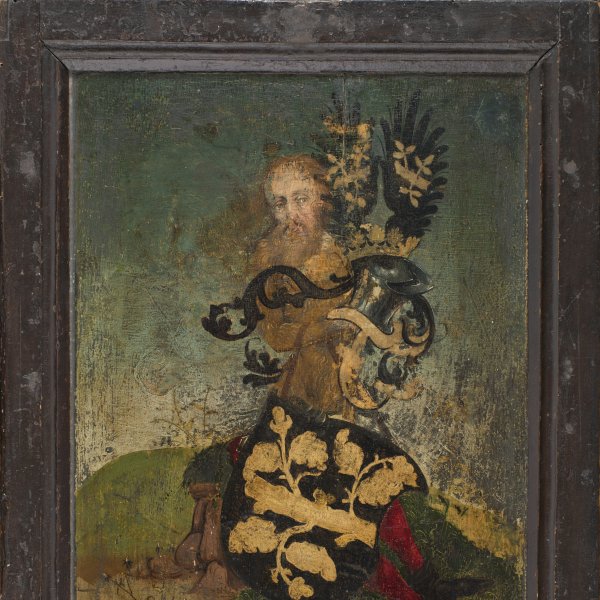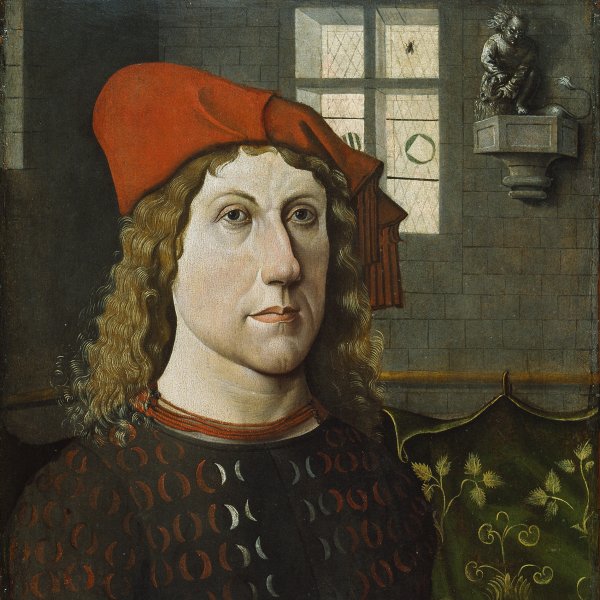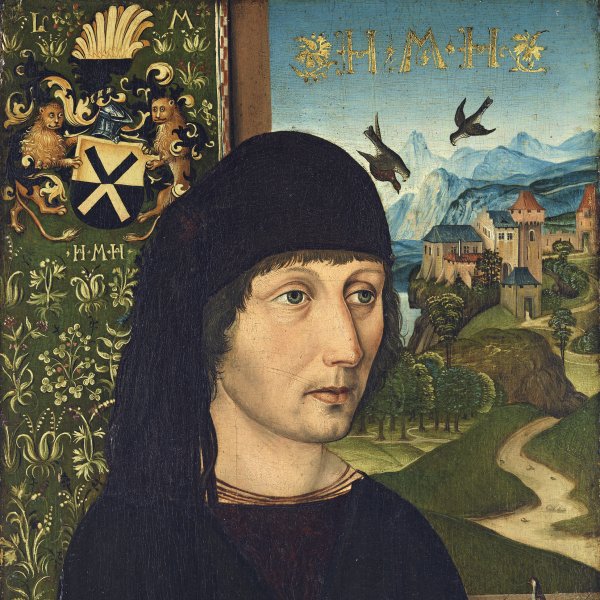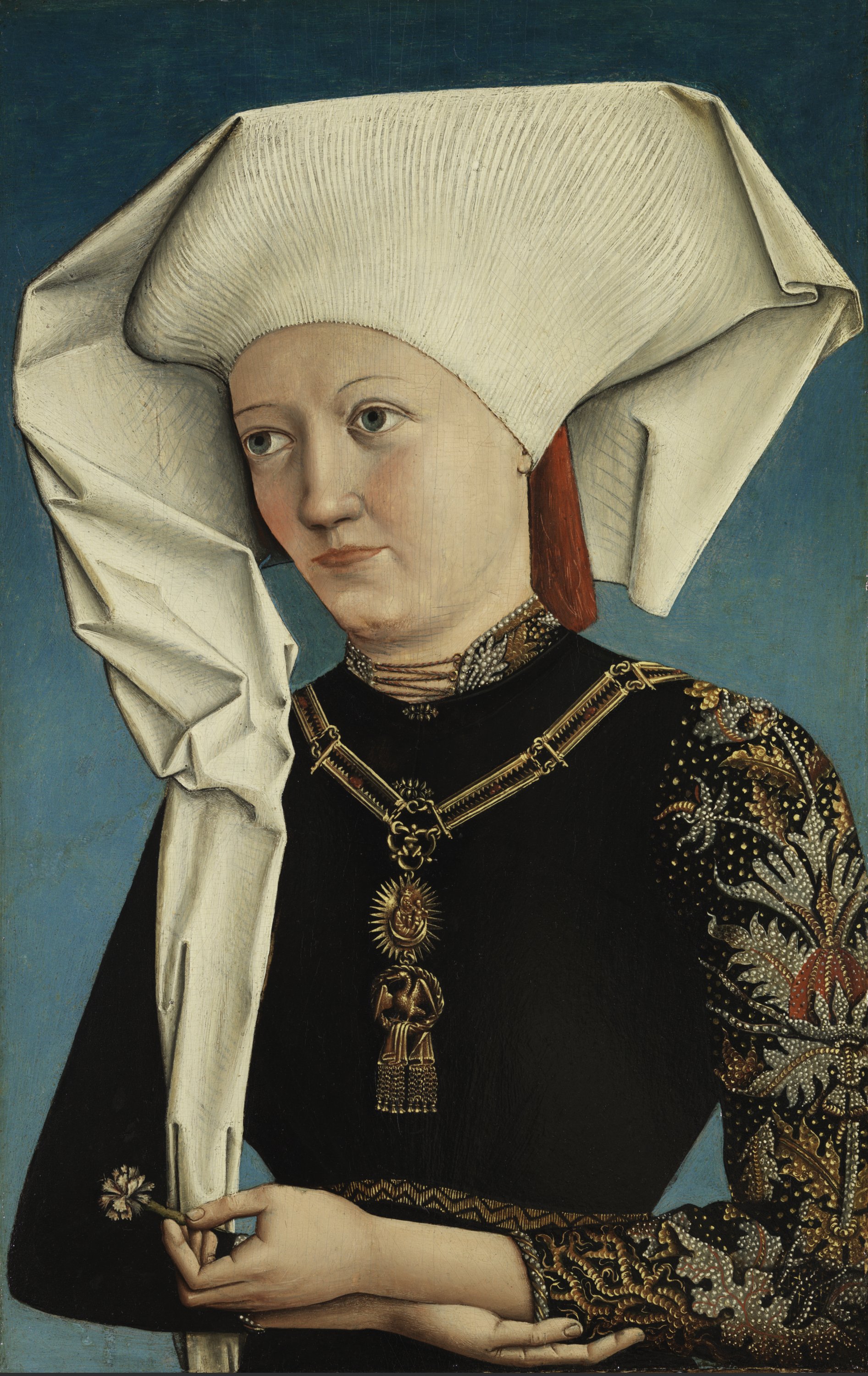Portrait of a Lady wearing the Order of the Swan
This work in the Thyssen-Bornemisza Museum was attributed to various anonymous masters before Isolde Lübbeke associated it with an anonymous German painter of the Ansbach court, active around 1490. The sitter stands out against a pale blue background. Shown as richly dressed, the artist particularly emphasises the striking brocade of her gown and the wimple that falls down over her shoulders in a slightly stiff manner. Both her necklace and the carnation that she holds are significant elements given that the presence of the flower and the wimple suggest that the panel may have had a pair. In addition, the gold chain with its two pendants, one of the Virgin and Child and the other of a swan, indicate that the sitter belonged to the Order of the Swan. Founded in 1440 by Frederick II of Brandenburg, this religious Order dedicated to the Virgin reached its peak of prestige and popularity in the late 15th century.
This anonymous portrait was acquired in 1935. Since at least the late 18th century it had belonged to the monastery at Admont in Styria. The panel was loaned by the monastery to the Landesmuseum Joanneum in Graz where it was on display between around 1850 and the date that it entered the Thyssen-Bornemisza collection in 1935. To judge from its extensive bibliography, the painting has been of interest to art historians who have attempted to attribute it to a particular artist and place of origin and to identify the sitter, all so far without success.
The sitter’s pleasing face with its large blue eyes whose colour interacts with the background, is softly drawn and delicately modelled. The painter used a pale colour range for the young woman’s skin that creates a gentle contrast with the pink tones of the cheeks. The paleness of her skin is also boldly contrasted with the complex and elaborate headdress that totally covers her head. With its fine pleats that frame her face, it falls in broad lines on either side of the face and forms crisp folds as it descends. The background and the headdress as well as the sitter’s skin all function to emphasise the richness of her clothing. She wears a tight black costume with a narrow waist. Its dark colour is offset by the rich decoration of pearls, sequins and gold thread with which the neck and the right sleeve are adorned.
Aside from stylistic points, three elements should be singled out in this work: the headdress, the necklace with two pendants on a chain and the pinkish-red pink that she holds. Both the headdress and the pink suggest that this image had a pair, given that the headdress alludes to the sitter’s status as a married woman while the pink is a symbol of fidelity. The striking necklace has two pendants, one of the Virgin and Child and the other of a swan, indicating that this sitter belonged to the Order of the Swan. This religious order, which was associated with the most elevated social classes, was founded in 1440 by the Elector Frederick II of Brandenburg in Sankt Marien auf dem Harlunger Berg. The Order was expanded in 1459 by the Margrave Albrecht Achilles in Ansbach and was based in the chapel of Saint George in the Gumbertuskirche. A Marian Order with an emphasis on the Christian life, it enjoyed its high point of activity in the last decades of the 15th century with members from the highest ranks of society.
During the 18th century the unidentified sitter was considered to be Saint Emma of Gurk, a venerable Austrian nun who founded the Benedictine convent in Gurk in Carinthia. This identification was made on the basis of information on a label on the reverse of the painting.
Since its first publication in 1901 the painting has been attributed to artists from Styria, Franconia, and to the painter Sebald Bopp who worked for the Ansbach Court, the latter suggestion made by Stange. Lübbeke, whose attribution is the one that has been retained in this catalogue, suggested Peter Strieder, thus associating this work with the paintings in the Schwanenritterkapelle in Ansbach.
Mar Borobia





